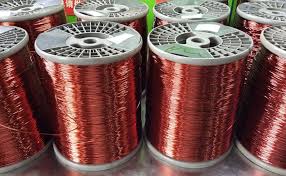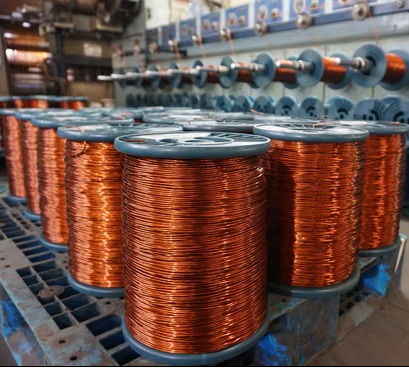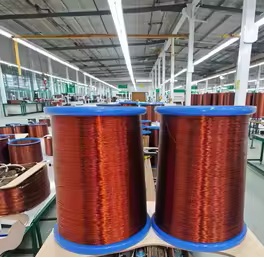With many types of insulating varnishes, and their formulation is the core technology of enameled wire manufacturing. Different types of varnish determine the final performance and application range of the enameled wire. We will discuss in detail several commonly used insulating varnishes for enameled wire.
Polyester (PE)Characteristics:
Excellent overall performance
High mechanical strength
Good solvent resistance
High cost-effectiveness
Thermal rating: Typically 130°C (Class B) to 155°C (Class F).

Applications: The most widely used general-purpose enameled wire, commonly found in household appliances (such as washing machines and electric fans), general industrial small and medium-sized motors, transformers, general-purpose relays, and inductor coils.
Potential Disadvantages:
Poor hydrolysis resistance: The varnish film is susceptible to hydrolysis in high temperature and high humidity environments, resulting in a decrease in insulation performance. This makes it unsuitable for applications such as variable frequency motors, which may generate "corona" and moisture.
Fair thermal shock resistance: Under rapid temperature fluctuations, performance is inferior to that of more advanced varnishes.
Polyurethane (PU)Features:
Direct solderability: The paint film can be removed directly during high-temperature soldering without prior scraping, facilitating automated production.
Excellent high-frequency performance: Low dielectric loss at high frequencies.
Good colorability: Can be easily dyed in various colors, facilitating line identification and management.
Thermal rating: Typically 130°C (Class B).
.jpg)
Applications: Widely used in small precision components such as electronic transformers, relays, micro motors, inductors, and high-frequency components in communication equipment.
Potential Disadvantages:
Relatively low heat resistance: Cannot be used in high-temperature applications.
Medium mechanical strength: Its scratch resistance and flexibility are inferior to those of polyester paint.
Polyimide (PI)Features:
Extremely high thermal rating
Excellent chemical resistance
Radiation resistance
Mechanical properties
Thermal rating: Can reach temperatures exceeding 220°C (Class C).

Applications: Aerospace, military, high-temperature motors, and electronic equipment in special environments.
Disadvantages: High cost, relatively poor hydrolysis resistance; poor alkali resistance; high processability requirements.
Polyamide-imide (PAI)Features:
Performance between polyester and polyimide
Extremely high heat resistance
Excellent mechanical properties
Excellent chemical resistance
Excellent scratch resistance
Thermal rating: Typically 180°C (H-class) to over 200°C.

Applications: Commonly used in applications requiring high heat resistance and mechanical strength, such as electric vehicle drive motors and compressor motors. It is also often combined with polyester lacquer (EIW wire) to enhance performance.
Potential Disadvantages:
High cost: Although lower than polyimide, it is much higher than polyester lacquer.
In some cases, scraping the lacquer before welding is required.
Other specialty lacquers: These include corona-resistant lacquers (used in variable-frequency motors), self-adhesive lacquers (which allow the coil to self-adhere after heating after winding), and Litz wire lacquers to meet specific application needs.

.jpg)

